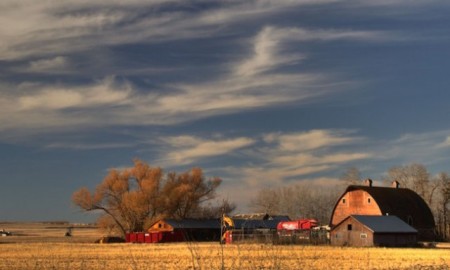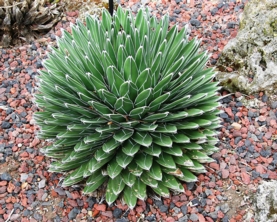July 20, 2015 – Talk about a dry place. When Neil Armstrong stepped off the Lunar Excursion Module to the Moon’ surface 46 years ago today he was the first to walk on the driest landscape ever witnessed by a human. Drier than any desert on Earth. It was much later when we discovered that in some parts of the Moon there was water ice deep in polar craters.
But the view from the Moon showed an Earth that was resplendent with water, a blue marble suspended in the inky blackness of the surrounding space. More than 70% ocean, it is hard to describe Earth as water starved. And yet one of the great challenges we face in the 21st century is the increasing scarcity of fresh, drinkable water. Why? Because we are exploiting more of it to address the needs of the 7.4 billion humans along with our livestock’s needs and industry demands. Compounding the water issue is a changing global climate, a product of rising greenhouse gases, and leading to changed weather patterns, and even ocean currents. One of those changes is happening in Western North America from the Baja Peninsula of Mexico, through California, Arizona, Nevada, the Great Basin, the Pacific Northwest, Canada’s west coast and prairie provinces and even Alaska. As evidence this June was the hottest and driest on record from California to Alaska with temperatures in the latter as hot as those recorded in the summer in Las Vegas.
In today’s Globe and Mail newspaper, an article describes the prolonged drought impacting farmers in Alberta where wheat, barley, canola and alfalfa crops are withering in the fields. The drought is akin to the one that California has experienced with rainfall levels less than 20% of norm. Those wonderful blue prairie skies almost cloud free with temperatures climbing into the mid-30s Celsius (30 equal 86 Fahrenheit) daily are not being enjoyed by farmers. Because what they mean is no rain in the forecast, and any that does fall cannot replenish the moisture being lost in between showers.
What’s the cause of Alberta farmers’ angst? The continued presence of warmer than normal ocean surface temperatures in the Central and North Pacific Ocean, thousands of kilometers away. Climate scientists tell us why the ocean is warmer. They remind us that 70% of global warming is being sequestered in the ocean. Warm water means warm air above and changes in barometric pressure and wind patterns. Hence much drier and warmer air entering the North American continent from the west and traveling as far north as Alaska and much of Western Canada.
In The Globe and Mail article which describes the drought Alberta farmers are facing, author Justin Giovannetti reports that “farmers across almost two-thirds of Alberta are coping with some of the driest conditions in decades….it could take years for the parched soil to recover.”
So what to do? How can farmers change their circumstances? Here are some ways to fight the heat and drought:
- Implement dry farming techniques including no till agricultural practices.
- Irrigate but not the way you have done it in the past. Instead replace inefficient methods with more direct to plant water technologies to reduce water waste.
- Where possible install water capture from air technology.
- Alter soil consistency from surface to subsoil layers to retain moisture more effectively.
- Change plant types so you grow only those which thrive in drier conditions.
- Get genetically altered, drought-hardy plants similar to what you already grow.
- Or stop growing crops on your land and allow it to return to its natural state.
The governments of Alberta and other drought-prone jurisdictions have no solutions for farmers to fall back on. (In fact, when you read the Canadian federal government’s impact of climate change statement you first are treated to the opportunities regions of the country will get from increased carbon dioxide in the atmosphere – how bizarre!) Insurance for crop damage and loss and emergency funding programs can only go so far. And with ever smaller winter snow packs (also affected by the warming Pacific Ocean) the spring melt from the Rocky Mountains to the west means an ever diminishing flow of water to Alberta’s fields. Groundwater sources are drying up. Rivers are at their lowest levels, and Alberta farmers look to the skies for relief but find none.
In California water restrictions are trying to conserve what little remains in the aquifers of California’s Central Valley. New technology is helping farmers calculate how much what each plant they grow uses in water daily. Mulch from yard and construction debris is being applied to fields to reduce evaporation. Drip irrigation (the technology created by Israel’s Netafim) is cutting water use on some farms by as much as 25%.
In the second last action that farmers might take I mention genetically altered crops that can handle drought. What if farmers could find a plant that is drought resistant, discover the genetic characteristics that give it that advantage, and then introduce those genes into staple crops? That is in fact what some current researchers are attempting to do.
They are using the Agave, the plant that is used to make Tequila. Agave can withstand drought because its photosynthesis processes are different from that of wheat, barley and so many other crops. Agave uses a process called crassulacean acid metabolism (CAM) which lets its thrive on less water.
Work at Oak Ridge National Laboratory is trying to unlock the mystery of CAM, finding out which of almost 100 genes in the Agave plant allows it to thrive in semi and desert conditions. CAM works differently than most photosynthesis processes in most plants. Instead of absorbing CO2 during the day it turns the Agave into a “night breather.” Of course plants do not breathe, they absorb through open pores called stomata. With Agave’s pores open only at night rather than in the heat of the day, the plant loses less water through evapo-transpiration. This allows it to thrive on as little as 20% of the water needed by non-CAM plants (which are defined by botanist as C3 and C4). And because Agave takes in CO2 through the night it has to temporarily store it until the sun rises when it can break down the gas to perform photosynthesis.
The researchers have identified all the genes involved. They haven’t as of yet worked out the mechanism and order in which the genes instruct the Agave plant to perform its unusual “night breathing” adaptation to become the “camel of plants.” But once they do the intention is to create hybrid staple crop plants with CAM capability. The target plant is the poplar, a fast growing tree which has already been fully sequenced so we know its complete DNA. Once the research yields a hybrid-poplar the scientists will move on to try genetically altering corn and sorghum to decrease the amount of water needed for these crops to thrive.
It won’t come in time to help current Alberta farmers cope with drought. But for the more than 9 billion of us that will be alive in 2050, in a very much altered world, it could prove a life saver.
Related articles across the web













